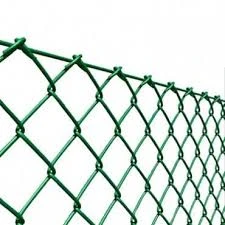The Versatility and Benefits of Gabion Structures
In recent decades, gabion structures have gained considerable attention in construction, civil engineering, and landscape design. The term “gabion” originates from the Italian word “gabbione,” meaning “big cage.” At its core, a gabion is a wire mesh container filled with rocks, stones, or other similar materials, and it serves a multitude of purposes. As we delve into the multifaceted benefits and applications of gabions, we can better appreciate why they have become a staple in various fields.
Environmental Benefits
One of the most significant advantages of using gabion structures is their positive impact on the environment. Since these cages are frequently filled with natural stones, they blend seamlessly into their surroundings. This integration aids in preserving the natural aesthetic of riversides, hillsides, and other landscapes. Additionally, gabions can reduce soil erosion by acting as barriers that slow water runoff. Over time, vegetation can grow around and even within the gabions, further enhancing the stability of the surrounding soil while contributing to biodiversity.
Cost-Effectiveness
In contrast to traditional concrete structures, gabions are often more affordable. The materials used to fill these cages can be sourced locally, reducing transportation costs and environmental impact. Moreover, the labor involved in assembling gabion structures is generally less intensive. Construction often requires no specialized skills or machinery, making it accessible for smaller projects or communities with limited resources. This cost-effectiveness makes gabions particularly appealing for civil engineering projects in developing areas.
Structural Stability and Durability
Gabion structures are renowned for their strength and durability. The wire mesh cages are designed to withstand significant pressure and can adapt to shifts in the earth due to environmental conditions. Over time, the rocks within the gabions settle and interlock, creating a stable structure that can last for decades, if not longer. This longevity makes gabions an excellent choice for retaining walls, flood control, and slope stabilization, ensuring that investments in infrastructure will stand the test of time.
gabion 100

Aesthetic Appeal
In addition to their practical advantages, gabions can be aesthetically pleasing. Designers and architects appreciate their versatility and ability to create visually interesting landscapes. Gabions can be used to form decorative walls, benches, and other structures, adding an organic look to urban environments while still fulfilling utilitarian functions. The selection of stones used for filling can be customized, allowing for a range of colors and textures that can contribute to the overall design of the space.
Sustainability and Recyclability
Today, there is an increasing focus on sustainability in construction. Gabion structures align well with this ethos, as they often utilize materials that are locally sourced and environmentally friendly. When a gabion reaches the end of its life, the materials can usually be recycled or repurposed, minimizing waste. This contributes to a more sustainable construction practice that reduces our overall environmental footprint.
Applications Across Disciplines
Gabions are utilized in various fields, from engineering to landscaping. In civil engineering, they are commonly used for erosion control, riverbank protection, and as noise barriers. In landscaping, gabions can create attractive features such as seating areas, flower beds, and retaining walls that complement natural surroundings. The versatility of gabions has led to their adoption in artistic projects as well, where they are used to create sculptures or unique installations in public spaces.
Conclusion
The increasing recognition of gabion structures highlights their significant role in modern construction and design. Their environmental benefits, cost-effectiveness, durability, aesthetic appeal, and sustainability make them an excellent choice for numerous applications. Whether it’s stabilizing a hillside, creating an eye-catching landscape feature, or managing water runoff, gabions offer a versatile solution that aligns with contemporary goals in architecture and civil engineering. As we continue to seek sustainable practices in our built environment, the gabion remains a testament to the innovative integration of natural and practical design.
















